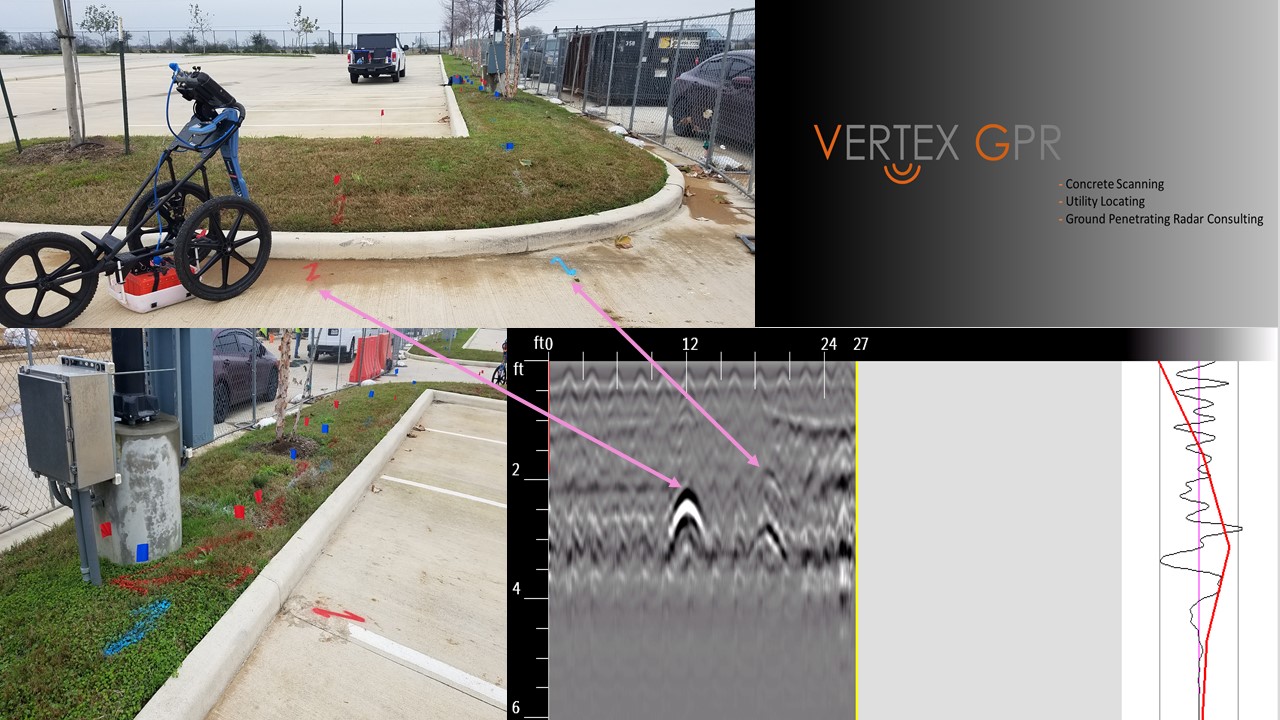Throughout my ground penetrating radar career, I have been asked many questions regarding the capabilities of GPR. While there are many opinions and questions that constitute lengthy responses, I thought it would be fun and helpful to briefly answer what I believe are important questions and then a few that are always joked about.
1. How far can GPR penetrate?
This question has been posed to me countless times over the years. The kicker is, there is not a simple answer to this. The reason? Depth penetration is dictated by soil conditions and type of radar frequency. I have found 1” diameter plastic lines at four-feet on certain projects, while on others I have been unable to detect a 1’ diameter steel pipe at two-feet. From my experience, the largest obstacles for radar clarity and depth penetration are clay and moisture. If these two variables are present, they do not entirely rule out the use of GPR. However, the amount of detectable utilities may become an issue. Unfortunately, the achievable depth penetration of the radar is unknown until the soil on a given project site is scanned. If you are having a GPR scan performed for underground utilities, always ask your GPR operator what depth penetration the radar is achieving and what other methods are being used to assist with the locate.
2. How long does it take for the GPR to detect a utility?
Unless a 3D scan is being performed, the GPR data is processed and interpreted in real time onsite. The data that is shown in real time is displayed in a cross-section view of the substrate. This means that if the utility is detectable, the GPR will locate it within a very quick time frame, given the general area of the utility is known.
3. Can the GPR determine what type of utility it is detecting?
In some situations, yes. Steel and plastic lines will reflect the radar signal differently. This will give indication as to what material the line is made of. For the type of utility, the line typically must be traced back to its source.
4. Is GPR safe to be around?
Yes, the signal output is less than that of a smart phone.
5. Can you find gold with that?
If the gold is in a large stash, yes, the GPR will detect a reflection. However, there is no way of knowing the reflection retrieved is from a stash of gold. So, let’s just say you would be hard pressed to find a GPR operator sneaking around at night looking for El Dorado.
6. You looking for Jimmy Hoffa?
I have never searched for Mr. Hoffa. However, GPR has been used to assist with homicide investigations where victims have been thought to be buried. So, as this question is always stated as a joke, there is more truth behind it than typically realized.
7. Can you give me an MRI with that?
Unfortunately, no.
Tyler Zachman
Owner | Vertex GPR
Houston, TX










